A client has asked me to make two 'Cowcatchers' for a large locomotive, each just over two feet wide, made from ⅛" steel bar, 1" and ¾" wide for the forward jutting verticals, crossed by four horizontal rails of 1/8* x ½" section. The drawing showed every crossover fastened through with a nut and bolt, which looked really ugly and much more likely to snag a dead cow than to push it aside, and so I suggested using round head rivets instead, to which the client readily agreed. Hmm .. seven verticals and four rails, that's 28 rivetted joints, times two cowcatchers, so over fifty rivets to set …
At this point an image of shipyard rivetters with their powerful hammers making short work of huge rivets came to mind. Having recently used my old hammer-drill to poke holes in a concrete floor, and knowing I could select 'hammer only' I wondered if I could do something similar, albeit on a much smaller scale. Worth a try, I thought.
I already had 3/16" x ½" steel rivets to hand, and a pair of hex bodied rivet sets to suit, but how to mount a rivet set in the drill ? The answer was to buy the smallest (and hence, cheapest) SDS drillbit and sacrifice it for the stem …

.. then drill one of my rivet sets to accommodate the shaft. I had to heat the end to soften it first, then drilled and countersunk the hole …

after which the two components wet silver-soldered together, making sure the business end of the set stayed relatively cool. Simple really, and when mounted in the drill it looked quite purposeful …

With the other rivet set mounted solidly in the vice I put together components for a trial go, i.e. two pieces of ⅛" bar, drilled, and located on one of my rivets, its head nestling in the upturned tool in the vice.

I picked up the drill, located the tool hollow on the rivet stem, gave it a very short burst of hammer blows, and looked at the result. After more hammering trials, and some modification of the powered set (basically grinding back to make it shallower), it quickly produce very acceptable results. Impressively, the joints were completely rigid after just a second or so, but I carried on for a little longer to get the best finished effect I could.

My rivets are just a little too short to give a full round head, hence the shallower set, but it's not worth using ¾" rivets ( the next incremental length available in my searches) as they would be too long and all need shortening. The results achieved give me confidence that the 'cowcatchers' will be rivetted quickly, strongly and uniformly by this method. It works so well that I thought it worth posting here in case others can use the idea.
Regards to all, Ken.
Gordon W.


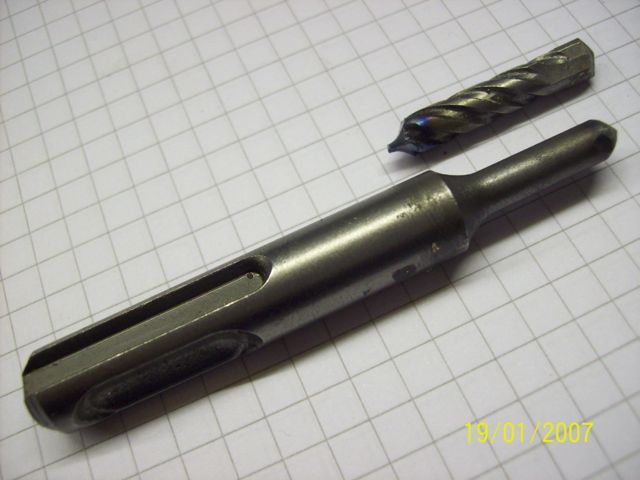
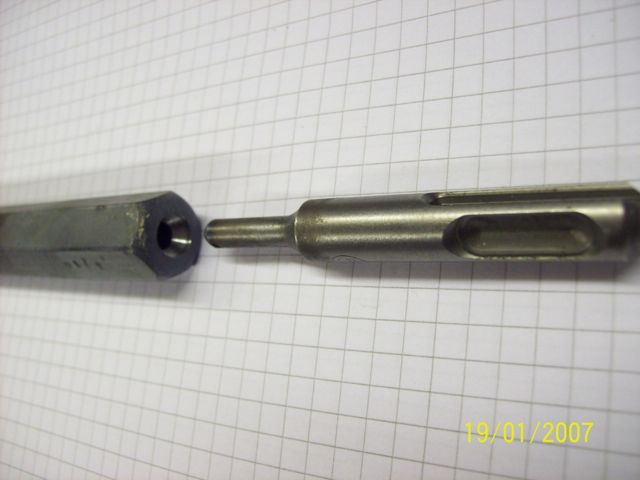
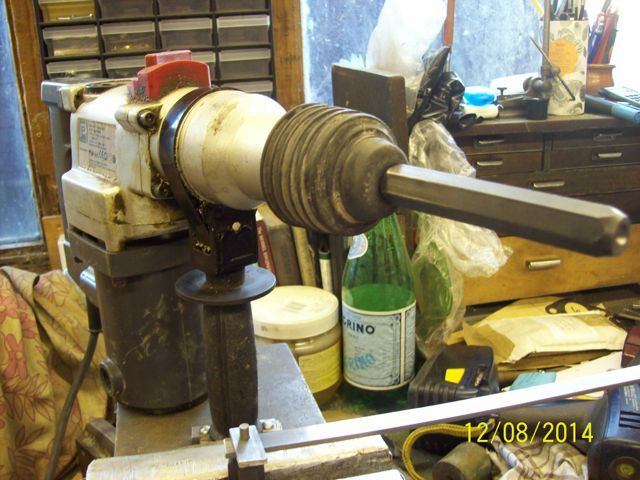
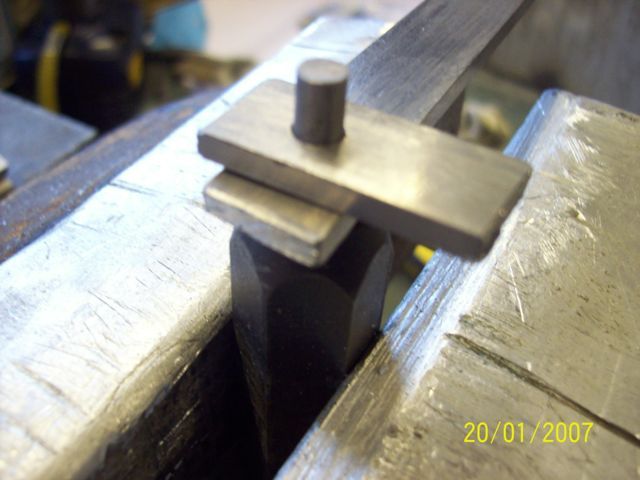
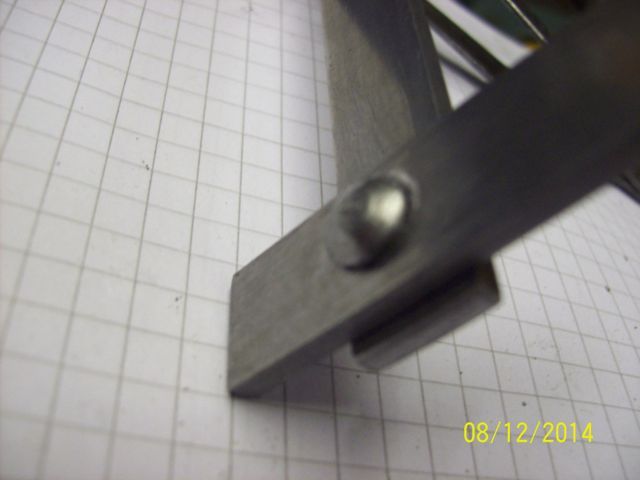
 The set fits in the hardy hole of a 1cwt anvil, at a height that allows the wheel rim to rest on a wood block to stop it all ringing. Ratchet strap round the wheel and anvil to prevent it flipping off and set to with a Hitachi hammer drill.
The set fits in the hardy hole of a 1cwt anvil, at a height that allows the wheel rim to rest on a wood block to stop it all ringing. Ratchet strap round the wheel and anvil to prevent it flipping off and set to with a Hitachi hammer drill.

